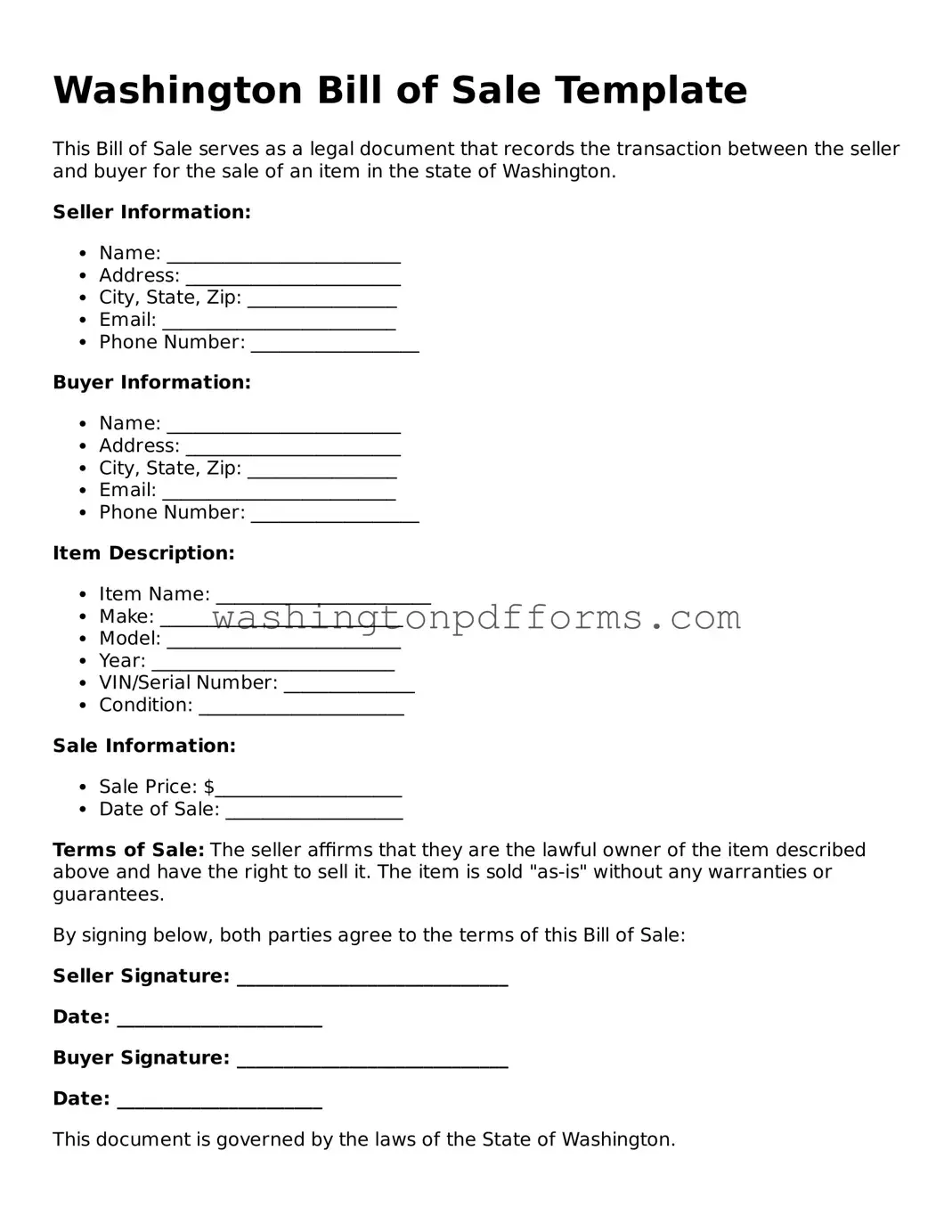When it comes to filling out the Washington Bill of Sale form, many people unknowingly make mistakes that can lead to confusion or even legal issues down the line. One common error is failing to provide complete information about the vehicle or item being sold. It’s essential to include details such as the make, model, year, and Vehicle Identification Number (VIN) for vehicles. Omitting any of this information can create problems for both the buyer and seller.
Another frequent mistake is not accurately recording the sale price. The form should reflect the actual amount agreed upon by both parties. If the sale price is misrepresented, it could raise red flags during tax assessments or when registering the vehicle. Always double-check that the price is clear and correct.
People often overlook the importance of signatures. Both the buyer and seller must sign the Bill of Sale for it to be valid. Without these signatures, the document may not hold up in court if disputes arise. Ensure that both parties sign and date the form to avoid any future complications.
Additionally, some individuals forget to include the date of the transaction. This detail is crucial as it establishes when the sale occurred. Without a date, it can be challenging to prove when ownership was transferred, which may lead to issues with registration or liability.
Another mistake is neglecting to provide a witness signature, if required. While not always mandatory, having a witness can add an extra layer of legitimacy to the transaction. If there’s ever a dispute, a witness can help clarify what happened during the sale.
Sometimes, people fail to keep a copy of the Bill of Sale for their records. After the transaction, it’s wise to retain a copy for both the buyer and seller. This document serves as proof of the sale and can be useful for future reference, especially if questions about ownership arise.
Moreover, individuals may not understand the importance of checking for any liens on the vehicle. Before completing the Bill of Sale, it’s advisable to verify that the vehicle is free of any outstanding debts. If there are liens, the buyer could face unexpected financial burdens after the sale.
Some sellers mistakenly believe that the Bill of Sale is the only document needed to transfer ownership. In Washington, additional paperwork, such as the title transfer, is also necessary. Failing to complete all required documents can lead to delays in registration and potential legal issues.
Lastly, a common oversight is not reviewing the completed form for errors before submitting it. Simple typos or incorrect information can cause significant problems later. Take the time to carefully review the Bill of Sale to ensure that all information is accurate and complete.
